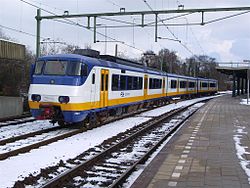This article needs additional citations for verification .(January 2008) |

Photo taken during the rebuild of Rotterdam Central station; in the background the current overall roof is taking shape, while the foreground still shows one of the old individual platform covers.
The following are current and former trains in the Netherlands.














